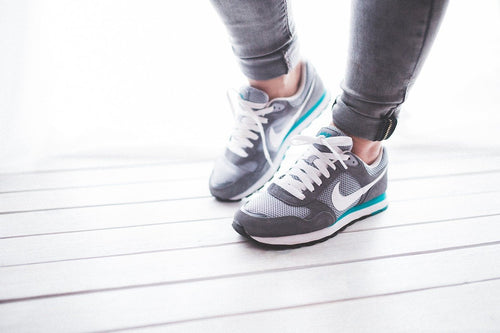Running is one of the easiest sports out there to get into. This is because all you need are some running attire and a good pair of running shoes to start running today (hence, the title of my site, lol). GPS watch, sweat proof earpiece etc are nice to have but not necessary for a good run. Running attires are simple because these can last you for years. In this case, how often should I replace my running shoes?
Why Do We Need to Replace Running Shoes?
This may seem like a no-brainer but there are many runners out there who like the comfort of their old pair of running shoes despite being so worn out. As we run, the running shoes will suffer from natural wear and tear, this will cause the hard rubber sole to become thinner and slippery if running on wet grounds. Unseen to the eyes, the midsole (white EVA foam) that cushions impact can also break down after a lot of mileage. So, other than the joy of shopping for a new pair of running shoes (and that new shoe smell, YAY :) ), the main reason is actually to prevent unnecessary injuries from worn out running shoes.
So, How Often Should I Replace My Running Shoes?
You should consider replacing your running shoes once it shows signs of wearing out. The wearing outs are usually determined by your running area, body weight, foot type and mileage.
Running Area - running on the road or trails will wear out your shoes quicker compared to running purely on treadmills.
Body Weight - If you are slightly on the heavier side, the extra weight can wear down the midsole a little faster.
Foot Type - A heavy overpronator will wear their shoes out faster than a lighter, neutral runner.
Mileage - More mileage means more runs means more wear and tear. As a general rule of thumb, it is recommended to replace your running shoes between 450 to 600 miles.
450 To 600 Miles Is A Pretty Big Range
Yes, 450 to 600 miles is a wide range. This is because these are dependent on so many factors. Every runner weighs different and uses distinct foot strike, both of which affect the cushioning of shoes in many ways. The best way to track your miles is to use a mobile app. There are apps such as RunKeeper or Strava that can help you record your mileage on each pair of shoes, this is particularly useful if you have more than one pair of running shoes.
Use Your Body As A Guide
Most of the time, you will know when the time of your running shoes is ‘almost up’. I call this the runner’s sense. You can tell that you don’t feel as comfortable wearing the running shoes anymore. Furthermore, signs of minor injuries or soreness after your runs can be telling you that your shoes are past its prime. One good way to test is to try on a new pair of running shoes and compare it with your old shoes. Sometimes, you are too used to the feeling of your old shoes that you forgot how it felt to be running in something new. Shopping and trying on a new pair of running shoes can be the little things that keep runners excited. Take this as a reward for your milestones achieved with your previous pair. Getting new shoes is also important to help keep you comfortable and injury-free.
How often should I replace my running shoes? 450 to 600 miles is a good gauge, but at the same time, don’t forget to use your own judgement to make the decision. After a few pair of running shoes, you will soon develop the runner’s sense to know when to replace them.
Do you agree with my post? How often do you replace your running shoes? Please share with me by commenting below.
Cheers and Start Running Today



